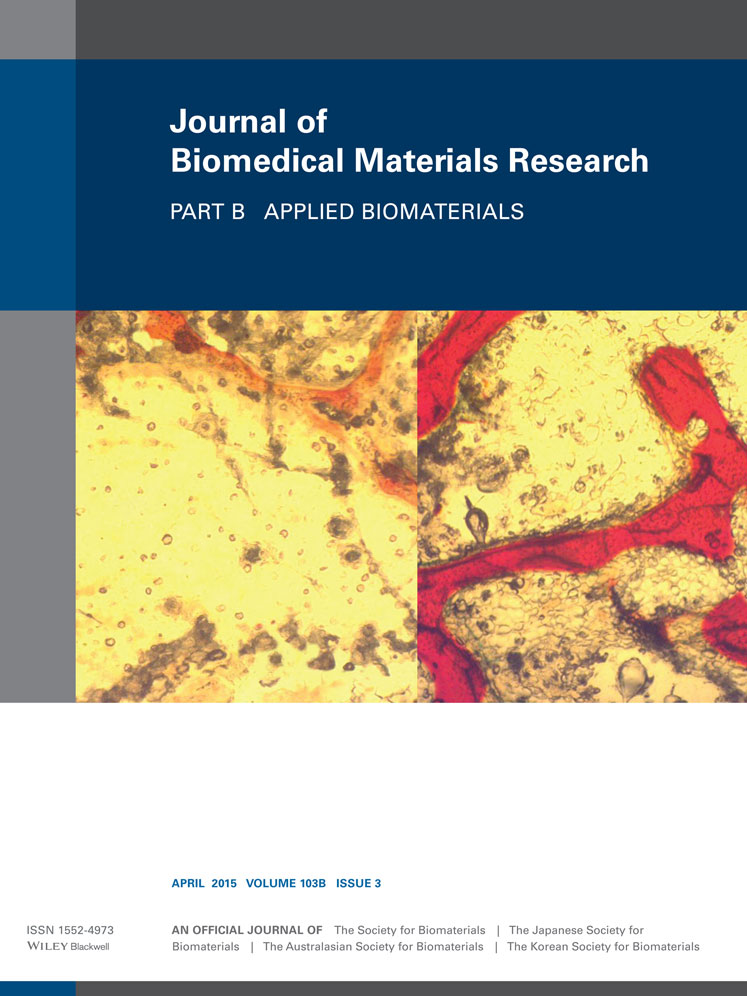Peroxisome proliferator activated receptor gamma loaded dental implant improves osteogenesis of rat mandible
This work was supported by the National Research Foundation of Korea (NRF) grant funded by the Korea government (MSIP) (No. 2014R1A4A1005309).
Abstract
Peroxisome proliferator activated receptor gamma (PPARγ) has been known for their anti-inflammatory effects. But the application of this molecule in implant-induced inflammation has not been clearly studied yet. Here, we determined in vivo anti-inflammatory and osteogenic effects of PPARγ coated dental implant in the rat mandible. We used chitosan gold nanoparticles (Ch-GNPs) as a non viral vector to carry PPARγ plasmid DNA. Ch-GNPs were conjugated with PPARγ plasmid DNA through a coacervation process. Conjugation was cast over titanium (Ti) implants (4.5 × 0.8 mm) by dipping, and implants were installed in rat mandibles. One, 2, 3, and 6 weeks post-implantation, mandibles were examined by microcomputed tomography (µCT), immunohistochemistry, hematoxylin & eosin, and tartrate resistance acid phosphatase (TRAP) staining. In vivo Ch-GNPs/PPARγcoated implants were associated with inhibition of implant induced inflammatory molecules interleukin-1β and receptor activator of nuclear factor kappa-B ligand and enhanced expression of osteogenic molecules like bone morphogenetic protein 2 and 7 (BMP-2/-7) by up-regulating anti-oxidant molecules heme oxygenase-1. µCT demonstrated that PPARγ overexpression increased the density and volume of newly formed bone surrounding the implants compared to control (n = 4; p < 0.05). Also, PPARγ reduced the number of TRAP positive cells. These results support the view that PPARγ overexpression diminishes inflammation and enhances osteogenesis around the dental implants. Thus, implant coated with anti-inflammatory molecules could have a significant utilization for the preparation of new biomaterials and may serve as prosthetic materials in patients suffering from inflammatory bone disease. © 2014 Wiley Periodicals, Inc. J Biomed Mater Res Part B: Appl Biomater, 103B: 587–595, 2015.




